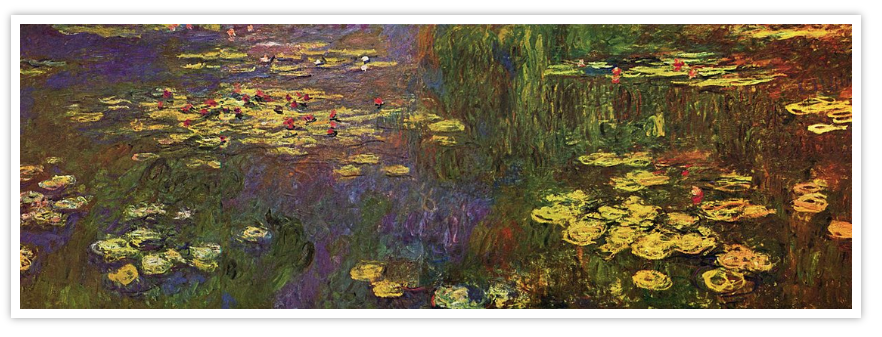Are we losing the ability to create photographs that have lasting value? What I mean by this is that at times, I fear it is becoming ever more difficult to create a purely artistic photograph that becomes iconic based only on the merits of the photographer who created that photograph.
The simple fact of the matter is that when you look around at today’s most famous photographs, so many of them are images that have some kind of celebrity to them. These images are famous not necessarily because of their artistic quality, but because they’re of a famous person or a famous event like a battle or a gathering of some sort.
At the same time, I can’t help but compare these famous images to famous paintings. Although some paintings feature celebrity of some kind, many more are simple scenes or paintings of people who aren’t necessarily even real, let alone famous. You can look at hundreds of paintings by many, many great painters, including modern painters, and the subject material isn’t famous, but the work is valued as thought-provoking art.
Could this be because photography is imagined as a disposable medium? To a non-photographer, our art seems easy. Press the shutter button and there you have it — a piece of artwork that took you very little time to imagine and create. This perception isn’t helped by the fact that almost everyone in the modern world has a camera, at the very least a cellphone camera, and it is very easy for anyone to snap images of mildly interesting objects or events.
Further compounding the issue is the fact that not everyone has the time, patience or desire to learn how to manipulate mediums such as watercolors or oil paints. Everyone, however, can learn how to press a shutter button. The result of this ease of use is a literal deluge of photos from millions, possibly billions of people, both photographers, and non-photographers alike. The overwhelming majority of these images are things that are mildly interesting at the moment, or things that are interesting only to a very small group of people such as a family or a group of friends. All of these mildly interesting images, with their limited appeal, serve to give everyone the notion that the entire art form isn’t one with lasting value. That it is, in fact, a cheap and disposable medium.
What Causes Us to Perceive Photography as Cheap?
If we are looking to point fingers, there are many directions in which we could look. However, I feel that there are two main factors that cause us to disregard photography as serious art. The first is something that you could call the “Instagram Effect.”
For many, the point of photography is not to create an enduring image — one that appeals to a wide variety of people no matter where or when that photo was taken. Instead, the goal is to take as many images as possible so you can throw them up online and share them with friends, family, and acquaintances. You’ll get a few “likes,” a few comments, and then the moment is over and the photograph forgotten.
Instagram, in fact, is a prime example of the way we tend to treat photography nowadays. I’ve heard people tell new photographers to go to Instagram and look at the art you find there. But can you really consider Instagram or other online sharing websites as “looking at art?” I’m not saying you won’t find beautiful photographs there — photographs that are worthy of a museum wall, even.
What I am saying is that this kind of atmosphere poses two problems: First, you’ll need to sift through dozens, hundreds or thousands of snapshots to find exceptional images. And secondly, you don’t experience the photograph in the same way that you would at a museum. Online, you hit a “like” button and move on, whereas, at a museum or gallery, you are encouraged to gaze at the photograph and take in all of the details until you are satisfied with the experience. All of this fast clicking, looking and liking only serves to deepen the impression that photography is a fast, disposable and subpar medium.
Trends, to my mind, are the second huge issue that tends to make people assume that photography is cheap. Right now, a popular trend that I’ve been seeing are photos that are made to look old-fashioned, usually with washed-out pastel colors, often depicting an old sign, a rusty chair, a battered book, a country scene or something similar. Simply go to Etsy.com and search for photography — you’ll quickly see what I mean.
The problem with trends like these is just that — they are trends. If you follow trends, then you are not creating something original. You are instead taking the easy way, which is to get those quick, trendy images that people will like all up until the next trend rolls around.

Again, I have to look at famous paintings as an example. Look at Monet’s Water Lilies series. These paintings aren’t currently trendy. Water lilies weren’t a trend in Monet’s day, either. Neither was Impressionism, especially considering that Monet himself was one of the first to develop this style. And you know what else? When Monet’s work and the work of other Impressionists made its way to the art scene, it was widely hated. Critics cried out that the paintings looked unfinished or sketchy. But today, Monet and his contemporaries are famous — and will always be famous — because they dared to break with the trends and create something that no one else had done before.
What Are the Solutions?
I’ve established that photography is an endangered art form, that the cheapening of photography will eventually lead to it being extraordinarily difficult for any photographer to be taken seriously as an artist — unless, that is, the photographer creates an image of something or someone famous. So how do we fix this?
We must start by taking our art seriously. We need to recognize that there is, in fact, a problem and that the only way to correct that problem is for we, as photographers, to start treating our art with the dignity that it deserves.
Another thing that we can do is to collect artistic photographs from the photographers that we admire. Purchase original prints, hang them throughout your home and enjoy them, just as you would an expensive Renaissance painting. Not only does this prove that photography does have value as art, but it also sets an example to the friends and family that see you enjoying your collection of photographs. Perhaps they, too, will follow your lead and start to enjoy photography as high art also.
Finally, value your work through your actions as a photographer. Treasure your camera just like any artisan or artist treasures the tools of their trade. Don’t make decisions lightly. Weigh each choice as you compose the images, process them, have them printed, matted and framed. When you take special care to produce quality art, others will value it more, too.
Art isn’t easy or cheap. It was never meant to be. It is only through the hard work and vision of the artist that the art becomes an icon. If we, as photographers, want to ensure the longevity of our work, then we need to be the first to give photography the emphasis that it deserves.





